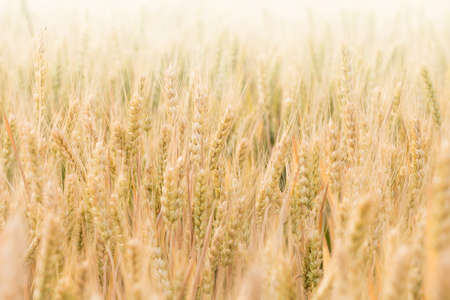Introduction: The Rhythm of the Land
In the gentle undulations of the British countryside, the passage of time has long been marked not by clocks and calendars, but by the rhythm of the land itself. From golden fields swaying beneath late summer skies to the crisp scent of autumn on the breeze, each phase of growth and harvest has woven itself into the fabric of British culture. This profound connection between people and place finds its fullest expression in the traditional harvest festivals—celebrations that blend gratitude, prophecy, and communal spirit. Spanning from Lammas in early August to Michaelmas at the end of September, these festivals are more than mere relics of an agrarian past; they remain touchstones for spiritual reflection and collective identity. Through ritual, feasting, and folklore, communities have long come together to honour both the bounty of nature and the mysteries that lie ahead. In exploring these seasonal observances, we glimpse not only agricultural practices but also a deeper wisdom: a recognition that life’s fortunes are ever intertwined with the cycles of sowing and reaping, hope and fulfilment.
2. Lammas: First Fruits and Rural Rites
The festival of Lammas, celebrated on the 1st of August, marks a significant turning point in the agricultural calendar of Britain. Rooted deeply in tradition, Lammas—derived from “loaf-mass”—heralds the gathering of the first fruits and grains, symbolising gratitude for nature’s bounty and anticipation for the harvest ahead. One of the most emblematic customs is the offering of the first sheaf of wheat to the local church or community, a gesture believed to ensure continued fertility and abundance in the fields.
The Ritual of the First Sheaf
This age-old rite holds great importance among rural communities. The first sheaf was often fashioned into a decorative loaf or placed upon the altar, blending pagan reverence with Christian thanksgiving. Such offerings were thought to invite blessings not only upon crops but also upon households and livestock.
Lammas Customs Across Britain
| Region | Unique Lammas Custom |
|---|---|
| Yorkshire | Baking a Lammas loaf shaped like a wheat sheaf for sharing at communal feasts |
| Scotland | Carrying the first cut grain through the village in a festive procession |
| Cornwall | Weaving “Corn Dollies” from new straw as charms for protection |
| Wales | Singing harvest hymns and blessing the fields with water from holy wells |
Village Gatherings and Community Spirit
Lively fairs and gatherings traditionally accompany Lammas, where neighbours would join in merrymaking after months of hard labour. These gatherings featured music, dancing, storytelling, and communal meals centred around freshly baked bread and seasonal produce. Such events not only reinforced social bonds but also offered farmers a moment to share their hopes—or anxieties—for the coming weeks of harvest.
A Time of Transition and Hope
Lammas serves as both celebration and prophecy; it signals the onset of reaping what has been sown while inviting villagers to read omens in weather patterns and crop conditions. In this way, Lammas stands as a cherished threshold between high summer’s warmth and autumn’s promise—a time when ancient rites continue to echo through British countryside traditions.

3. Community and Celebration: Feasting in the Fields
Throughout the British Isles, harvest festivals from Lammas to Michaelmas have always stood as much more than simple markers of agricultural labour—they are vibrant celebrations of community spirit. As summer yields to autumn, rural villages come alive with communal feasts held in barns, churches, and open fields. These gatherings are rooted in ancient tradition, where neighbours and farm workers would lay down their tools to share a hearty meal, marking the end of months of toil with gratitude and merriment.
Bread baking takes pride of place at these festivities. The first sheaf of wheat is often ground and baked into a loaf offered at the local church, symbolising thanks for the earth’s bounty. Each loaf tells a story of the land and its people—recipes passed down generations, shaped by regional customs and weathered hands. Sharing bread at harvest tables not only feeds the body but also nourishes bonds within the community, uniting everyone from tenant farmers to landed gentry.
Traditional games add laughter and competition to the day’s revelries. Sack races across meadows, tug-of-war contests on village greens, and apple bobbing for children reflect the playful spirit that infuses these occasions. Music rings out from fiddles and accordions as folk songs recall ancient tales of abundance and hardship overcome. With every cheer and shared joke, these gatherings become milestones in rural life—woven deeply into the social fabric.
Harvest marks thus serve as more than mere celebrations; they are vital social events anchoring the year’s rhythm in togetherness. For centuries, such communal rituals have provided moments for reflection, gratitude, and joy—a time when differences are set aside beneath bunting-strung beams or under autumnal skies, reminding all present that prosperity is sweetest when shared.
4. Prophecies and Folk Beliefs: Reading the Signs
The period from Lammas to Michaelmas is rich with folk wisdom and agricultural prophecies, where the British countryside becomes a living tapestry of omens, sayings, and traditions. For centuries, rural communities have relied on these time-honoured beliefs to interpret nature’s signals and guide their labours during the crucial harvest season.
Weather Lore and Natural Signs
Farmers and villagers alike have long observed the behaviour of animals, the patterns of clouds, and the changes in plants as indicators of what the coming weeks might bring. Weather lore has its roots deep in the collective memory of British rural life, with each observation serving as both reassurance and gentle warning for those tending their fields.
Popular Harvest Sayings
| Saying | Meaning |
|---|---|
| “If St Swithin’s Day be fair, for forty days ’twill rain nae mair.” | If 15 July is dry, a spell of fine weather will follow; if wet, expect prolonged rain. |
| “When blackberries are ripe at Michaelmas, expect a harsh winter.” | The timing of fruit ripening is believed to predict the severity of the winter ahead. |
| “Cut your corn by Lammas Day or your barn will fill with rot and decay.” | A reminder to complete the grain harvest by early August to avoid spoilage from autumn dampness. |
| “A heavy dew on Michaelmas morn foretells a good apple crop next year.” | Naturally occurring dews are interpreted as signs of fruitful seasons to come. |
The Wisdom Behind Prophecy
Such sayings were rarely uttered lightly; they reflected generations of close observation, blending practical knowledge with an air of prophecy. The rural folk knew that while science could explain much, there remained a place for intuition and respect for nature’s rhythms. These prophecies shaped not only agricultural practices but also communal spirit, reminding all that the harvest was not just labour but an ongoing dialogue with the land itself.
5. Michaelmas: The Guardian of the Grain
As the cycle of harvest draws to its close, Michaelmas emerges as a festival deeply rooted in the heart of rural Britain. Traditionally observed on 29th September, Michaelmas marks not only the end of the agricultural year but also serves as a spiritual milestone for farming communities across the countryside. The customs and religious observances surrounding this day are rich with symbolism, intertwining the practicalities of rural life with threads of faith and folklore.
The End of Harvest and Rural Renewal
Michaelmas arrives when fields have been shorn and barns stand full, symbolising completion and gratitude. Historically, it was a time when labourers’ contracts were renewed or concluded, and rents were paid. Villages would come together to share in communal meals—most notably goose, thought to bring prosperity for the coming year. This tradition echoes an ancient sense of closure, marking a pause before winter’s hardship set in and preparing hearts and homes for what lay ahead.
Saint Michael’s Protective Role
At the centre of Michaelmas stands Saint Michael the Archangel, revered as a guardian against evil and a patron saint of farmers. In churches adorned with autumnal fruits and sheaves of corn, prayers were offered not only for a bountiful harvest but for protection through the darker months. For many rural dwellers, Saint Michael’s presence provided comfort—a celestial protector watching over livestock, crops, and families alike.
Symbols and Superstitions
The customs surrounding Michaelmas abound with symbolism. The last sheaf of grain harvested was often woven into decorative ‘corn dollies’, believed to house the spirit of the crop until sowing resumed in spring. It was also said that after Michaelmas Day, blackberries should not be picked; folklore warns that the devil spoils them after being cast from Heaven by Saint Michael.
Thus, Michaelmas resonates as more than just an agricultural marker. It embodies gratitude for nature’s gifts, respect for celestial guardianship, and a deep-seated hope for renewal—a fitting conclusion to the journey from Lammas to Michaelmas within Britain’s harvest traditions.
6. Enduring Legacies: Modern Echoes of Ancient Traditions
The reverberations of harvest festivals, stretching from Lammas to Michaelmas, can still be keenly felt within Britain’s contemporary landscape. While the rhythms of rural life have shifted with the tides of industrialisation and urbanisation, communities across the country continue to mark the season’s bounty with ceremonies that blend age-old customs and modern sensibilities.
Continuity in Celebration
Today, churches, schools, and villages hold annual Harvest Festival services, often in late September or early October. Though the agricultural calendar may no longer dictate daily life for many, congregants gather to offer thanks for the year’s abundance, echoing their forebears’ prayers for fruitful harvests. Baskets brimming with apples, grain sheaves, and autumn flowers decorate altars and community halls—symbols as resonant now as they were centuries ago.
Modern Adaptations
The spirit of generosity endures, but its expression has evolved. In lieu of offerings for the local manor or clergy, today’s gifts are frequently destined for food banks and charitable organisations supporting those in need. Schools engage children in collecting non-perishable goods and learning about the significance of gratitude—a gentle reminder that community bonds remain at the heart of these observances.
Cultural Resonance
Beyond formal ceremonies, echoes of Lammas and Michaelmas appear in autumn fairs, apple days, and village fetes scattered across the British countryside. These gatherings retain a sense of continuity with ancient festivities: traditional games are played, Morris dancers perform to lively tunes, and local produce is celebrated with pride. The old prophecies—of weather omens and agricultural fortune—may be recounted more as folklore than fact, yet they lend a certain enchantment to the proceedings.
In drawing these threads from past to present, it becomes clear that Britain’s harvest festivals are not mere relics but living traditions. Through adaptation and reinterpretation, they continue to foster gratitude, community spirit, and a reverence for nature’s cycles—enduring legacies born beneath the turning wheel of the agricultural year.


